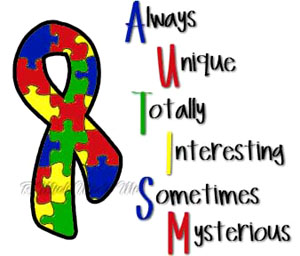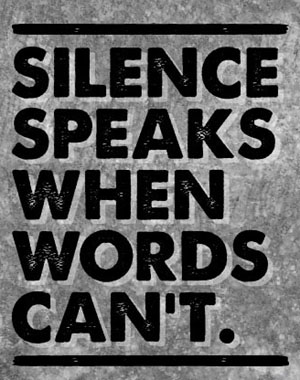Wordless
“…”
That’s “silence” in writing.
It is often the catchphrase of a mute protagonist in Japanese-style Role Playing Games. It’s great in the game because you can fill in the blank with your own persona.
It can be a powerful challenge in therapy. Silence can be the space that your patient is finally offered to fill. It can be the wall they use to keep themselves safe. It can be the tool therapists use to lance an emotional boil and free the toxic words trapped within.
But, what if your patient cannot speak? What if you—a classically trained “talk therapist”—are now sitting before a patient without your dear, dear words?
That is where I’ve found myself.
“About 25% of people diagnosed with an autism spectrum disorder could be considered to have nonverbal autism” but doing therapy with them is still in exploration. This could be because “the term ‘nonverbal autism’ is not a part of the diagnostic criteria…because there is no clear line between verbal and non-verbal individuals with autism. Some people have the ability to speak, but lack the ability to use language in a meaningful way. Others can’t use spoken language, but are able to communicate with written or typed language, American sign language, picture cards, or digital communication devices” (Rudy, 2010). Thus, it’s hard to treat what you can’t diagnose, but to further increase the challenge, says Rudy, “One of the strangest aspects of nonverbal autism is the fact that no one really knows why some people with autism can’t – or don’t – use spoken language.” Some may have neurological or physical impairments which impede speech, and there are many differences between autistic children and verbal children “but at this point there is no agreement on just what those differences are or how they impact any given individual” (Rudy, 2010)
My question is the same with every kid: How do I help? Usually they can answer me. This time, I went to the sources
Behavior Mod vs. Toolbox Build
 Generally, when looking at helping an autistic child, the work began in the 50’s, 60’s and 70’s with men like clinical psychologist Ivar Lovaas. The early behavior modification attempts did net results, but some of the practices were flat out appalling. I will not be doing things like “a slap to the buttocks” or using “the removal of pain” as a reward. My stomach clenches. Though, he and his team truly sounded like they were trying to help. He described “these behavioristic attempts” with an air of positivity, and despite some of the extreme measures which appall us today, he said the methods held “a promise of help and a certain optimism for the autistic child [which] contrasted with the general hopelessness that had grown out of the failure that the psychodynamic therapies had encountered in trying to help these children.” (Lovaas, Koegel, Simmons & Stevens, 1973) Though I don’t agree with some of their methods, they do identify the crux of my, psychodynamically trained struggle; those therapies, the “talkie ones” don’t do well, like using a hammer to do crochet.
Generally, when looking at helping an autistic child, the work began in the 50’s, 60’s and 70’s with men like clinical psychologist Ivar Lovaas. The early behavior modification attempts did net results, but some of the practices were flat out appalling. I will not be doing things like “a slap to the buttocks” or using “the removal of pain” as a reward. My stomach clenches. Though, he and his team truly sounded like they were trying to help. He described “these behavioristic attempts” with an air of positivity, and despite some of the extreme measures which appall us today, he said the methods held “a promise of help and a certain optimism for the autistic child [which] contrasted with the general hopelessness that had grown out of the failure that the psychodynamic therapies had encountered in trying to help these children.” (Lovaas, Koegel, Simmons & Stevens, 1973) Though I don’t agree with some of their methods, they do identify the crux of my, psychodynamically trained struggle; those therapies, the “talkie ones” don’t do well, like using a hammer to do crochet.
So I pondered. While their use of “a slap or painful electric shock” is inhumane, “contingent reinforcement withdrawal, that is, the adult simply looked away from the child when he was engaged in undesirable behavior, left the child in his room, or placed the child in a room separate from the treatment room” or “reinforcement of incompatible behavior, such as sitting quietly on a chair” are still used today to more gently correct a number of antisocial behaviors, even by parents. (Lovaas, Koegel, Simmons & Stevens, 1973)
Yet to me, behavior modification is more about increasing a kid’s ability to adapt to their life and meet their own needs. First it involves showing them they have a tool box and that it’s okay to use it, then we fill it, then they practice using the tools within until they trust themselves. After all, even if it’s one of Lovaas’ kids who engages in “feces-smearing” or will masturbate no matter who’s around, or just punches people in the mouth, that’s a kid who’s using a tool that they know, have practiced with and trust it to solve their internal or external problem.
But it doesn’t solve my problem. Before I help a kid build the toolbox, we have to connect.
Stop Thinking, Just Play!
Can you build a rapport with someone who cannot speak? “Basically, get into the child’s world. Don’t talk to him or her directly, just talk in parallel,” says Dr. Judy K. Montgomery, a multi-faceted Speech Pathologist and former president of the American Speech-Language-Hearing Association. “Describe what YOU are doing with play items or toys– or just play, saying nothing” (Montgomery, 2004).
 Dr. Montgomery is an advocate of building a therapeutic rapport like children build a friendship. Do “anything that is physical, interesting and holds the attention of the child for a few minutes. Don’t enter their play for a long time. Just watch them covertly while you play,” in this way you can gather data on how they see the world, order things and their basic enjoyment-seeking. “See if you can find out their ways of ‘knowing,’” she urges. From there “Try to enter their play very gently by touching something they have touched, by putting your toy car next to their blocks, etc. See if it is tolerated. If so, do it again the next time,” and thus the rapport strengthens. “After about 6-8 sessions in which you truly do not intrude, the child will begin to trust you…it is a very powerful technique!” (Montgomery, 2004)
Dr. Montgomery is an advocate of building a therapeutic rapport like children build a friendship. Do “anything that is physical, interesting and holds the attention of the child for a few minutes. Don’t enter their play for a long time. Just watch them covertly while you play,” in this way you can gather data on how they see the world, order things and their basic enjoyment-seeking. “See if you can find out their ways of ‘knowing,’” she urges. From there “Try to enter their play very gently by touching something they have touched, by putting your toy car next to their blocks, etc. See if it is tolerated. If so, do it again the next time,” and thus the rapport strengthens. “After about 6-8 sessions in which you truly do not intrude, the child will begin to trust you…it is a very powerful technique!” (Montgomery, 2004)
Once that rapport is built, the next phase is doing actual therapy, which I’ve come—over years—to see as concentrated, facilitated growth; like the string which helps the string bean reach the sun, but covered in Miracle Gro.
In this sense, a therapy known as Auditory-Motor Mapping Training (AMMT) seems to be making the most impact. “The novel treatment builds on the observations that children with autism – who typically struggle with communication, as well as social interactions – often respond positively to music.” This is noted in the findings of a study by Catherine Y. Wan, Loes Bazen and others, which was first reported in the September 29, 2011 issue of the journal PLoS One and then re-reported by multiple health news agencies (Prescott, 2011).
We in the psycho-dynamic fields would call this therapy “strength-based” meaning that it builds on talents and interests. “First,” according to the study, AMMT “capitalizes on the superior musical abilities that have been observed in many children with ASD, and offers activities that they intrinsically enjoy. This positive response to music and music making may help children with autism engage and interact with others, thus allowing them to participate in activities that could facilitate the acquisition of communication skills” (Wan, Bazen, et. al, 2011)
“The AMMT treatment uses a combination of singing (intonation) and motor activities to strengthen a network of brain regions that is thought to be abnormal in children with autism… (Prescott, 2011) “To establish structure in the treatment environment, each session began with a ‘Hello Song’ and ended with a ‘Goodbye Song.’ The set of 15 items trained during treatment consisted of high-frequency objects, actions, and social words or phrases (e.g., ‘‘mommy’’, ‘‘more please’’, ‘‘all done’’) relevant to the child’s activities of daily living…the therapist introduced the target words or phrases by intoning
(singing) the words on two pitches, while simultaneously tapping the drums (on the same two pitches), to facilitate bimanual soundmotor mapping. The child was led from listening, to unison production, to partially-supported production, to immediate repetition, and finally to producing the target word/phrase on their own. During the treatment sessions, each step could be repeated several times, depending on the child’s progress toward mastery of the target” (Wan, Bazen et. al., 2011).
The track of AMMT therapy lasted eight weeks, but Catherine Wan saw “noticeable improvements in speech…as early as two weeks into the treatment…more importantly, the improvements lasted as long as two months after the treatment sessions ended” (Prescott, 2011).
Looking back at the “toolbox,” it then appears that if the patient is non-verbal, but science isn’t sure why, and there is proof that some autistic children can improve speech, that would be one powerful tool for increasing their ability to cope and adapt to their world and thus build positive behaviors. Even cooler, the study found that the children began to intone words “even for items that were not trained or practiced during the therapy sessions” which may imply that they began to use their tools to build new tools on their own. That’s growth. (Wan, Bazen et. al., 2011).
Whose Toolbox is it Anyway?
 It is my hope that science will catch up to autism and that the “very significant challenge to assess these individuals with traditional standardized instruments,” will be faced and conquered (Rudy, 2010). Right now many are very excited about the work of Dr. John Connolly, Ph.D. who is adapting his studies of the verbal impairment of brain injured patients to children with autism. He believes it is a “great opportunity to use our research methods to determine what level of cognitive activity may exist in non-verbal people with autism,” and that of course, everything depends on what we find, but the implications for therapeutic intervention with this group are considerable” (AutismSpeaks, 2010).
It is my hope that science will catch up to autism and that the “very significant challenge to assess these individuals with traditional standardized instruments,” will be faced and conquered (Rudy, 2010). Right now many are very excited about the work of Dr. John Connolly, Ph.D. who is adapting his studies of the verbal impairment of brain injured patients to children with autism. He believes it is a “great opportunity to use our research methods to determine what level of cognitive activity may exist in non-verbal people with autism,” and that of course, everything depends on what we find, but the implications for therapeutic intervention with this group are considerable” (AutismSpeaks, 2010).
Even Lovaas focused on speech. “If the child was echolalic (or once a mute child had about 10 imitative words),” he wrote, “we introduced a program designed to make speech meaningful and functional [then] the child was gradually moved through a series of steps designed to establish increasingly proficient use of language…” (Lovaas, 1973).
I will confess that I’m not entirely comfortable with this focus if the absence of speech is a physical or cognitive disability. If my patient can’t talk because they simply can’t then how to connect and help them grow is solely my problem to solve because they’re doing their best. But, as yet for this patient—and those to come—this is not known.
I am totally grateful that I work at a profoundly patient-focused and sensible facility that has made me one small part of a gifted team of behavior analysts, doctors and educators with many years of experience and certifications in treating autism. I am truly the neophyte at the pantheon in this situation, and happy to be so. It seems that, while I help my patient gather their tools, I too, will be gathering mine.
Perhaps that’s the key to Dr. Montgomery’s approach; equality, partnership.
It seems, in the present final analysis that the first step with an autistic, nonverbal patient is the same as with any other. You meet where they are, hold out a hand, and agree to walk together on a path that neither of you fully know, to an end that is as-yet unclear, joined only in a hope that through this partnership life will get better.
__________________________________________________
AutismSpeaks.com. (2010). Examining Cognitive Function in Non-Verbal Individuals with Autism. Retrieved from: http://www.autismspeaks.org/science/science-news/examining-cognitive-function-non-verbal-individuals-autism
Lovaas, Ivar; Koegel, Robert; Simmons, James Q. & Stevens, Judith. (1973) Some Generalization and Follow-up Measures on Autistic Children in Behavior Therapy. Journal of Applied Behavior Analysis. Retrieved from: http://www.ncbi.nlm.nih.gov/pmc/articles/PMC1310815/pdf/jaba00063-0133.pdf
Montgomery, Judy, Ph.D (2004) Therapy for Low Functioning Autism. Retrieved from: http://www.speechpathology.com/ask-the-experts/therapy-for-low-functioning-autism-878
Prescott, Bonnie (2011) Research shows new therapy helps nonverbal children with autism to say first words: Study tests novel treatment developed at Beth Israel Deaconess Medical Center. Retrieved from: http://www.eurekalert.org/pub_releases/2011-11/bidm-rsn111111.php
Rudy, Lisa Jo. (2010). What Is Nonverbal Autism? Retrieved from: http://autism.about.com/od/autismterms/f/nonverbal.htm
Wan, Catherine Y.; Bazen, Loes; Baars, Rebecca; Libenson, Amanda; Zipse, Lauryn; Zuk, Jennifer; Norton, Andrea; Schlaug, Gottfried. (2011). Auditory-Motor Mapping Training as an Intervention to Facilitate Speech Output in Non-Verbal Children with Autism: A Proof of Concept Study. Retrieved from: http://www.musicianbrain.com/papers/Wan_et_al_Autism_AMMT_SpeechOutput.pdf


